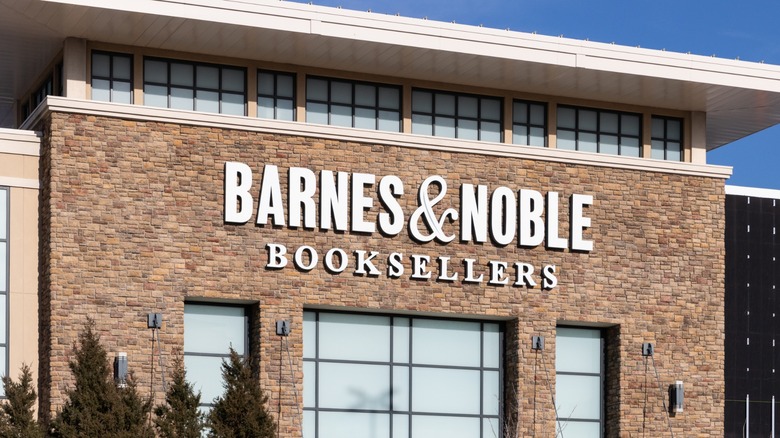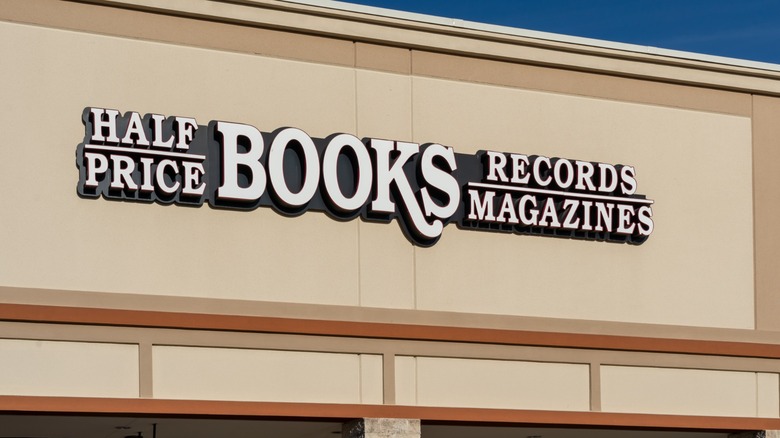This Beloved Discount Bookstore Is Closing Yet Another Location In 2025
Half Price Books, the largest family-owned discount bookstore chain in America, is shutting down its Berkley, California branch on November 30, 2025, after lease negotiations fell through. "We offered in many different ways to work with them on the current location," Kevin Gordon, part of the family that owns the building, told non-profit news publisher Berkleyside. "We're sorry to see them leave this location." However, he didn't expand on what exactly went wrong. Regardless, it's a big loss for Bay Area readers and bargain hunters alike, who once had a place to trade anything from antique volumes to old comic books under the store's proud motto: "We buy and sell everything ever printed or recorded (except yesterday's newspaper)."
While many fans of discount bookstores would like to dismiss the Berkley shutdown as an isolated hiccup for an otherwise strong brand, it's important to note that this is coming after a decade of setbacks. From 2024 to 2025, Half Price Books closed long-standing locations in Cedar Hill and Mesquite, Texas, citing twin pressures of real estate costs and dwindling traffic. Further back, in 2020 and 2021, it had to close its storied Rice Village and Montrose shops in Houston, and even a Seattle outpost years earlier. All told, at least four locations have gone dark over the past decade. Whether this has bigger connotations for the industry is yet to be seen, although, overall, the broader physical book market seems to be doing well.
The state of the publishing market
Half Price Books is shuttering stores during a time when the industry is both healthy and in the process of reshaping itself. In 2024, U.S. publishers generated $32.5 billion in revenue, a 4.1% jump from the year before. Print is still dominating, making up just over half of all sales, with 782.7 million units sold in 2024, according to Circana data reported by Publishers Weekly. At the same time, according to the Association of American Publishers, digital formats have been on a steady rise: audiobooks surged 22.5% to $2.4 billion, while e-books have seen only modest growth of about 1.5%. Physical retail has been rebounding too, climbing 3.3% in 2024 to $6.2 billion — a 48% gain over five years from its pandemic low.
You can see the same momentum looking at bookstore cash registers' numbers. Census data (via the Federal Reserve Bank of St. Louis) shows July 2025 receipts were around $610 million, which supports the claim that the industry has enjoyed a steady post-pandemic recovery with seasonal peaks around holidays and back-to-school rushes. But beneath these healthy top line numbers, the market is splitting in two very different directions.
What's next for booksellers?
On one side, Barnes & Noble is in the middle of an aggressive comeback, opening 57 new stores in 2024 and planning more than 60 more in 2025, with ambitions to surpass 1,000 locations nationwide. It's a dramatic reversal for a chain that, just a decade ago, looked like it might have followed Borders into a dead end. Perhaps if Borders had survived, it would have thrived in this post-pandemic market — as the data shows readers are coming back to physical bookstores. Further proof is that the American Booksellers Association reported a net gain in membership for 2024, with 2,433 bookstore companies operating 2,844 locations nationwide, up 11% year over year. Nearly 323 new indie bookstores, pop-ups, and mobile shops opened during the year.
On the other side are chains like Half Price Books, where the business model depends on razor-thin margins, used inventory, and affordable leases. The trend suggests that the money in print is going more into a polished browsing experience and community connection — luxuries that discount chains can't often afford.


